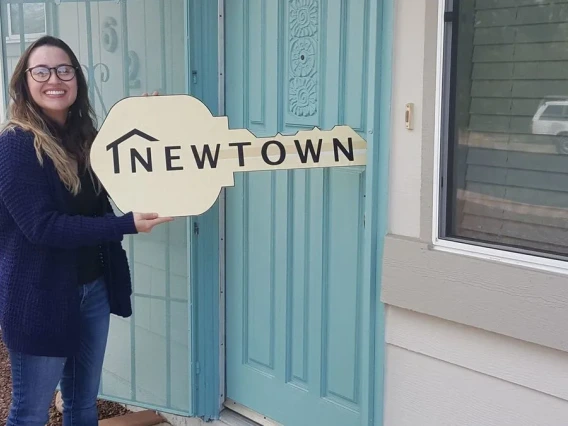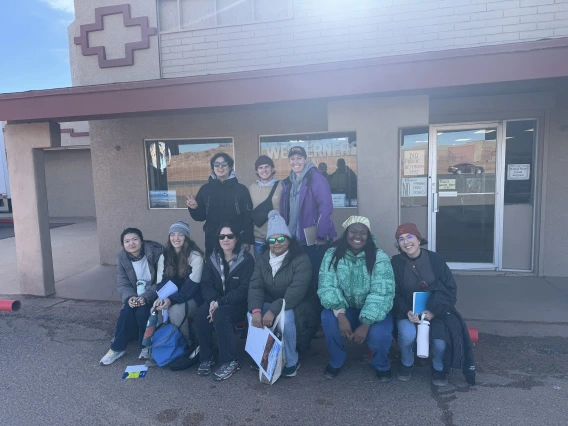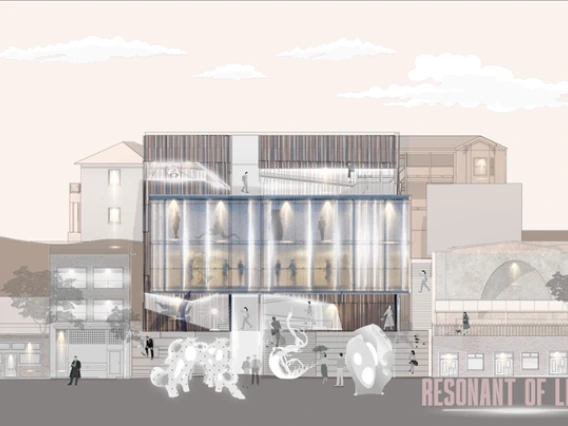Ambition Transforms Character: Mehli Romero '22 B.Arch / BA Creative Writing
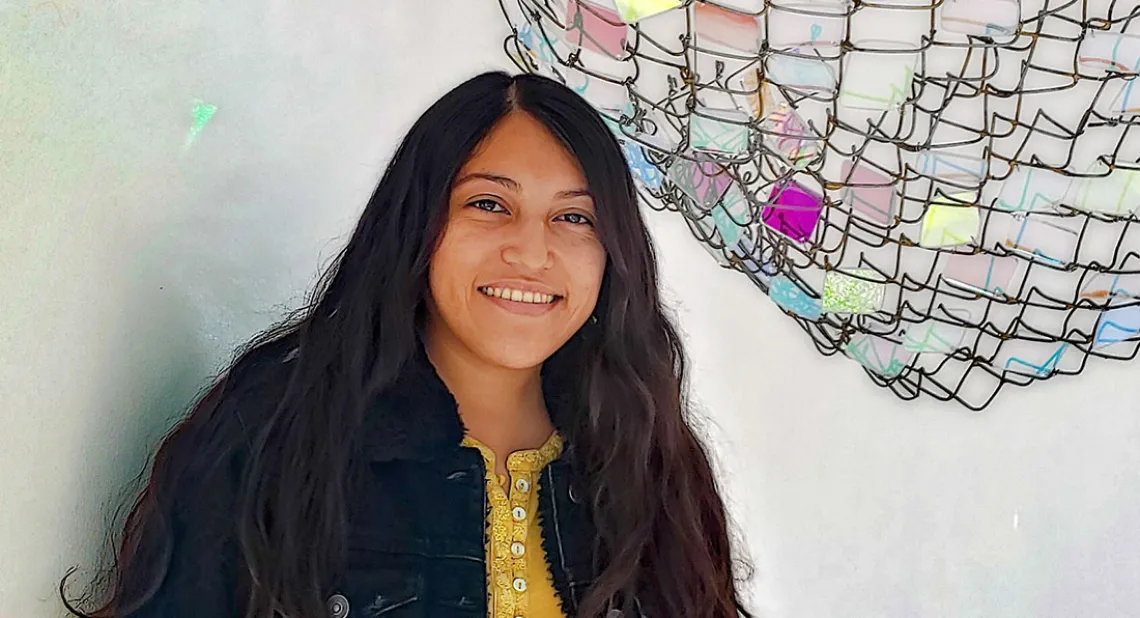
Six Questions with Bachelor of Architecture / Bachelor of Arts in Creative Writing Student Mehli Romero
"Ambition can transform your character, teaching you to work hard and have high hopes."
Mehli Romero is a Bachelor of Architecture and Bachelor of Arts in Creative Writing double major who came to CAPLA after living in Texas, Mexico, Germany and Italy. As a violinist, she is passionate about music and also now passionate about how places and spaces impact our mental health, a passion that she shares regularly on her blog, Archipeutic.
Here, Mehli shares her journey to and through CAPLA’s undergraduate architecture program.
What inspired your decision to study architecture?
My desire to become an architect bloomed the year I turned 10 as I spent a summer with my grandmother in Mexico. Her home was in a state of construction throughout my entire stay. One night I woke for a glass of water. I slipped out of bed and into the arched family room, stopping short at the edge of the triple height expanse which separated the family room from the kitchen. I glanced up at the ceiling where a long skylight ran from one end of the house to the other, allowing the resonant lightning to light up the massive foyer. Crossing seemed intimidating and scary so I took off running before the next clap of thunder. My feet disappeared from underneath me, my back drenched. Before I realized the skylight was leaking I was caught in a brief moment of awe. I gazed at the sky as another round of lightning lit the dark clouds, dancing against the walls, and reflecting off the growing body of water I laid in. The moment was inspiring, however, I had not thought about the forms, shadows, and raw materials that make a place. This was the first time I really noticed architecture and the moment has stayed with me ever since.
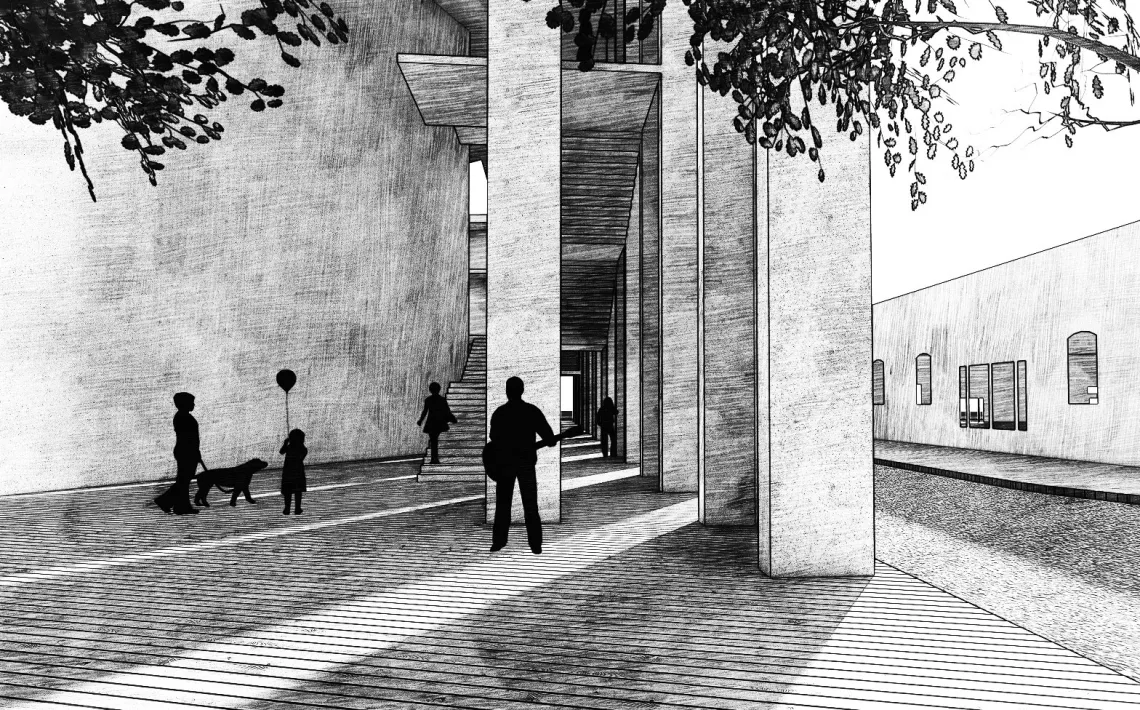
Haven Residences and Park low-income housing in El Paso Texas, by Mehli Romero for ARC 302 Studio.
Tell us about your path to the University of Arizona and the College of Architecture, Planning and Landscape Architecture.
I grew up in Houston, Texas before I moved to Mexico City as an adolescent, then Leipzig, Germany, and lastly various cities in Arizona. My fascination with architecture really took off my senior year of high school. I watched a documentary, Boy Interrupted, in which several professional psychologists suggested spaces can greatly affect mental wellness. The subject of mental health was foreign to me. I did not understand just how real the issue is and how most people in the world come face to face with this obstacle at some point in their lives. A high school teacher inspired me to ask: How does architecture influence our health, if at all?
After I graduated high school my life shifted dramatically. I found myself running about southern Italy for a year and a half as a missionary for the Church of Jesus Christ of Latter Day Saints. In each of the cities I lived in and visited I was exposed to not only spectacular architectural spaces but invigorating cultures and most importantly an incredible Italian people. My mind was filled with many questions regarding architecture, culture and place—questions no one in my family could answer. My awe upon gazing on these historical buildings was enough to persuade me to search for in-depth answers in college.
When I returned to the states my family suffered a great tragedy in terms of mental illness. I wondered even more: How could I use architecture to help create spaces of wellness? I decided to attend the University of Arizona to be close to my mother and sister who at the time lived in Tucson. I felt blessed to find out UArizona had an accredited architecture program.
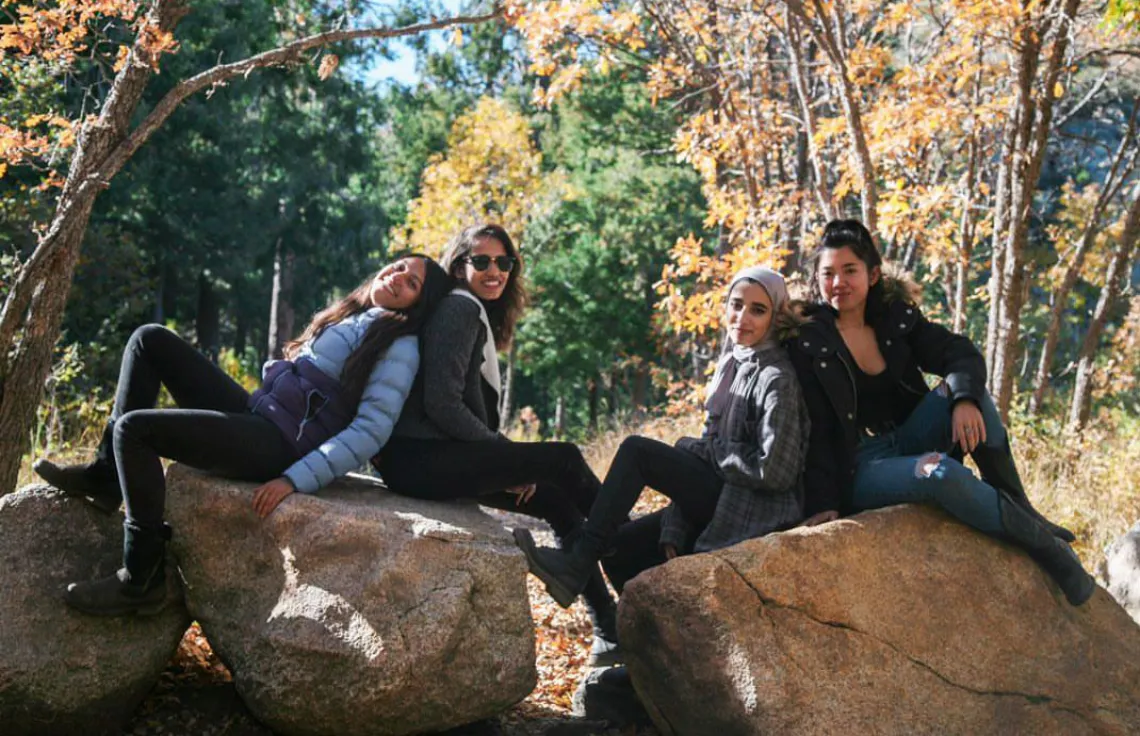
Mehli Romero and classmates atop Mount Lemmon.
What do you like most about the Bachelor of Architecture program?
The best thing about the B.Arch program for me is the realization that architecture is about people, not just buildings. I’ve recently learned about biophilic designs in studio where we are being encouraged to implement biophilia into our projects.
What has been your biggest challenge as a student in the B.Arch program, and how have you overcome that challenge?
My biggest architectural challenge has been working out the kinks of digital printing devices. They are difficult to navigate; thanks to my professor, though, I’ve got it figured out now. Their support and understanding have also helped me to overcome the problems my family is faced with, especially because my family all live outside of Arizona now. The CAPLA faculty and student environment have helped me to build a strong sense of refuge and trust. These relationships have kept me strong through family tragedies and trials over the last several years.
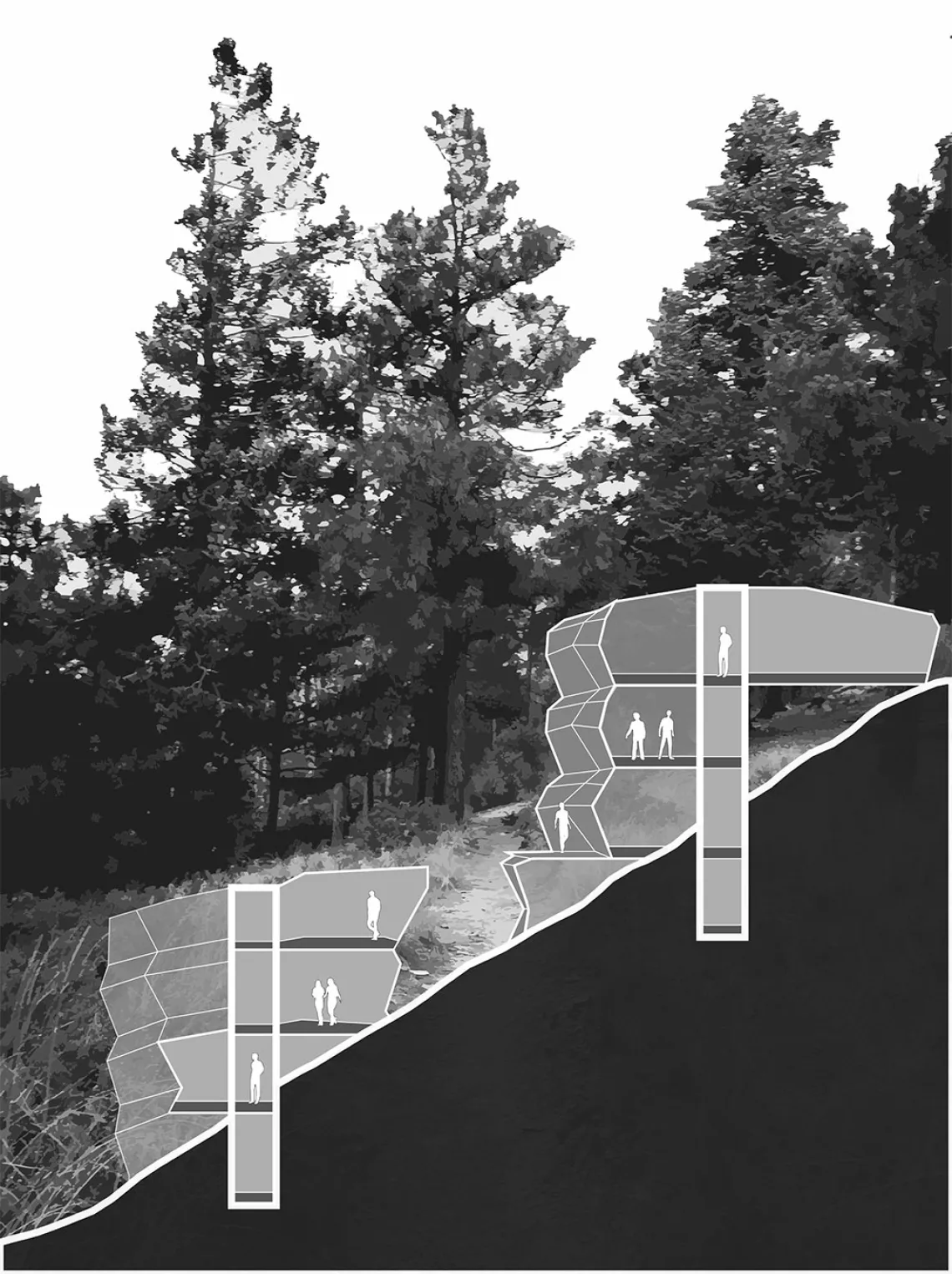
Section: Climate Learning and Research Center, Mount Lemmon, by Mehli Romero.
Tell us about your architecture internship experiences and your career path.
I’ve been exposed to architectural opportunities and work with my uncle Jose Cardenas, who is a luxury designer in Tampa; my uncle Marco Mancilla, who is an architect at the Houston Gensler office; my professors; and scholarship donors such as Dino Sakellar from Sakellar PLLC and Bruce Call. The internships they have offered me have allowed me a unique perspective into the working world of architecture. They each have inspired me to expand my horizons.
I've learned it’s the people who surround me that give my career path purpose. The worth of the human soul as a member of a community and as a person with dreams is what drives my architectural world and work. I strongly recommend building relationships with professors and other students who are happy to aide us with school or even with personal affairs. I also encourage others to travel and try new things whenever possible because we’ll capture a larger perspective of life. And lastly, don’t shy away from setting goals which may seem impossible to reach, such as working with big architects or trying new design methods. Ambition can transform your character, teaching you to work hard and have high hopes.
Tell us about Archipeutic.
I’ve recently started a blog and social media accounts called Archipeutic (Facebook, Twitter and Instagram) where I express my thoughts on architecture school, point out biophilic elements in architecture and promote awareness of developing spaces that advocate mental wellness.

